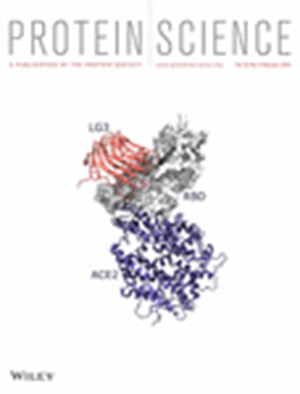X 射线和电子衍射剂量:RADDOSE-3D 的新功能包括强度衰减模型。
IF 4.5
3区 生物学
Q1 BIOCHEMISTRY & MOLECULAR BIOLOGY
引用次数: 0
摘要
对剂量估算程序 RADDOSE-3D 的新功能进行了总结。其中包括输入衍射强度衰减模型的功能,该模型可将 "衍射加权剂量 "输出从 "通量加权剂量 "修改为 "衍射衰减加权剂量";对 RADDOSE-ED 在电子衍射实验中的使用进行了说明,在电子衍射实验中,剂量历来是以电子/Å2 而不是灰度(Gy)来表示的;最后,还开发了 RADDOSE-3D 图形用户界面,方便用户使用程序中的所有选项。本文章由计算机程序翻译,如有差异,请以英文原文为准。
Doses for X-ray and electron diffraction: New features in RADDOSE-3D including intensity decay models.
New features in the dose estimation program RADDOSE-3D are summarised. They include the facility to enter a diffraction intensity decay model which modifies the "Diffraction Weighted Dose" output from a "Fluence Weighted Dose" to a "Diffraction-Decay Weighted Dose", a description of RADDOSE-ED for use in electron diffraction experiments, where dose is historically quoted in electrons/Å2 rather than in gray (Gy), and finally the development of a RADDOSE-3D GUI, enabling easy access to all the options available in the program.
求助全文
通过发布文献求助,成功后即可免费获取论文全文。
去求助
来源期刊

Protein Science
生物-生化与分子生物学
CiteScore
12.40
自引率
1.20%
发文量
246
审稿时长
1 months
期刊介绍:
Protein Science, the flagship journal of The Protein Society, is a publication that focuses on advancing fundamental knowledge in the field of protein molecules. The journal welcomes original reports and review articles that contribute to our understanding of protein function, structure, folding, design, and evolution.
Additionally, Protein Science encourages papers that explore the applications of protein science in various areas such as therapeutics, protein-based biomaterials, bionanotechnology, synthetic biology, and bioelectronics.
The journal accepts manuscript submissions in any suitable format for review, with the requirement of converting the manuscript to journal-style format only upon acceptance for publication.
Protein Science is indexed and abstracted in numerous databases, including the Agricultural & Environmental Science Database (ProQuest), Biological Science Database (ProQuest), CAS: Chemical Abstracts Service (ACS), Embase (Elsevier), Health & Medical Collection (ProQuest), Health Research Premium Collection (ProQuest), Materials Science & Engineering Database (ProQuest), MEDLINE/PubMed (NLM), Natural Science Collection (ProQuest), and SciTech Premium Collection (ProQuest).
 求助内容:
求助内容: 应助结果提醒方式:
应助结果提醒方式:


